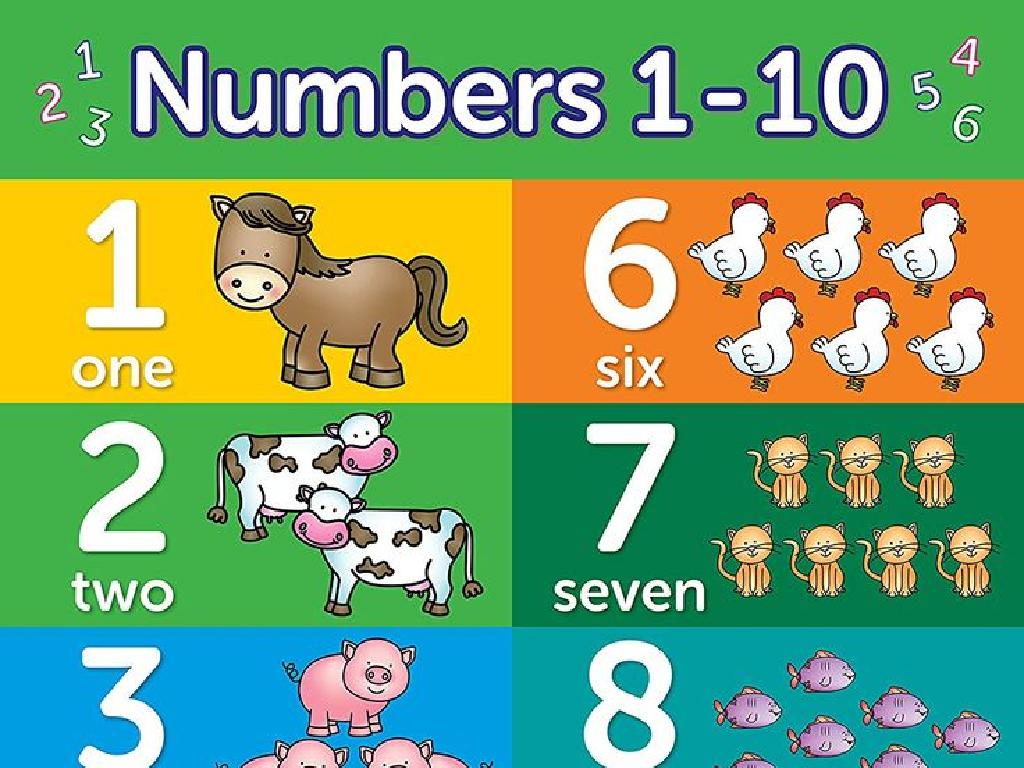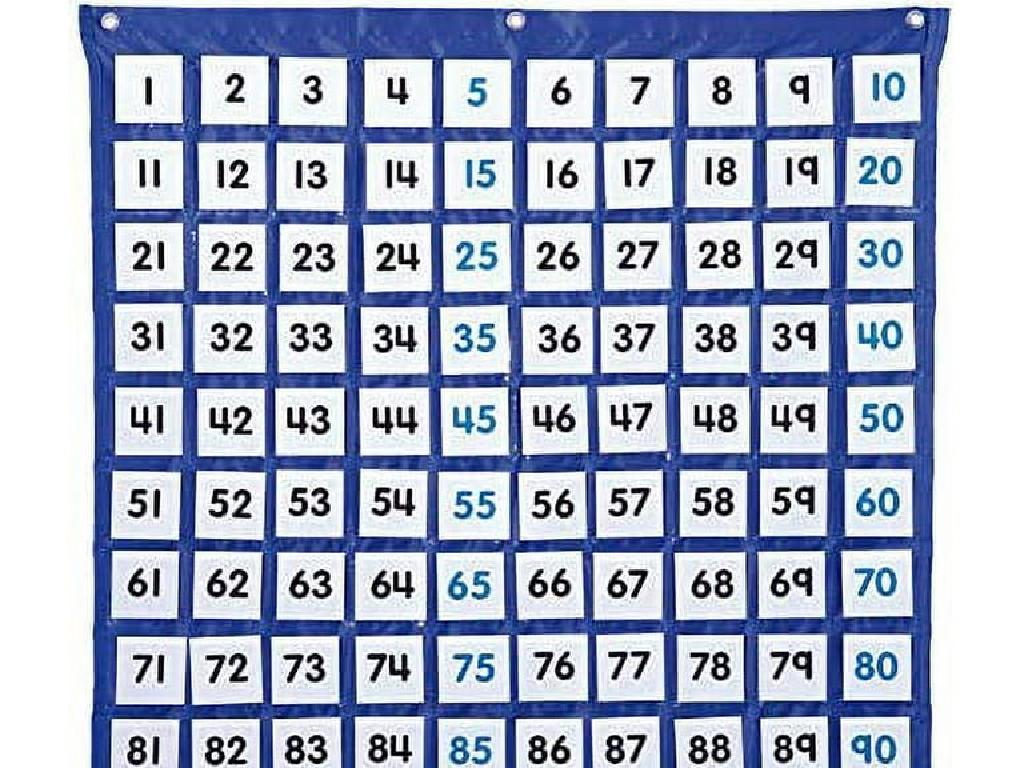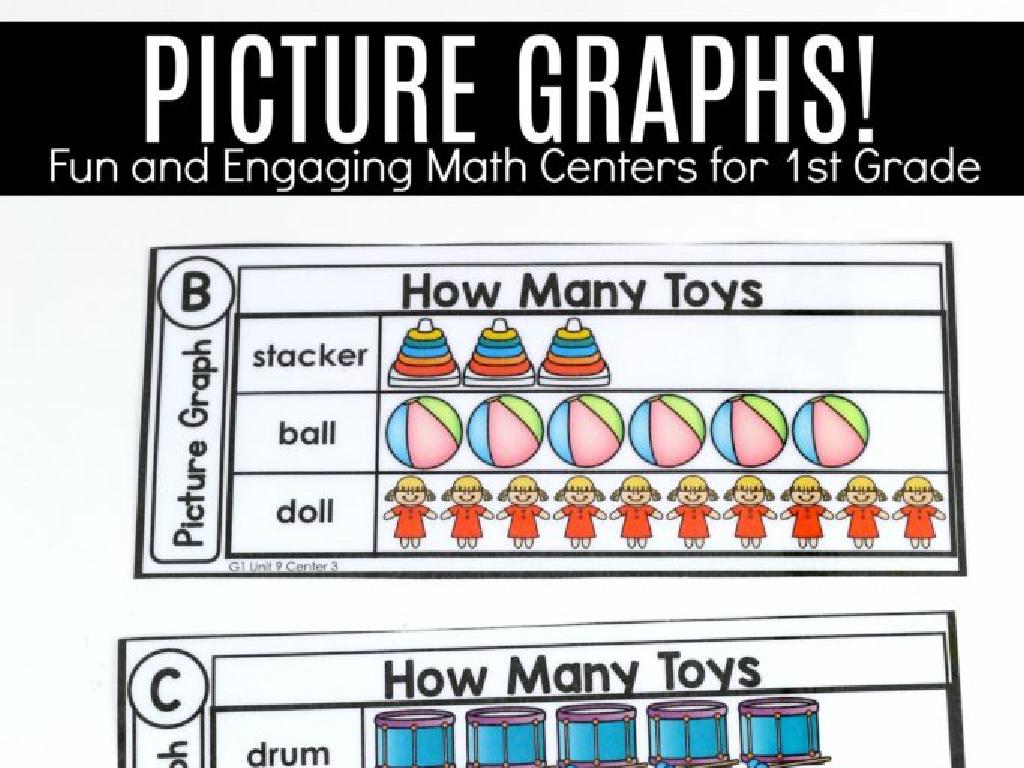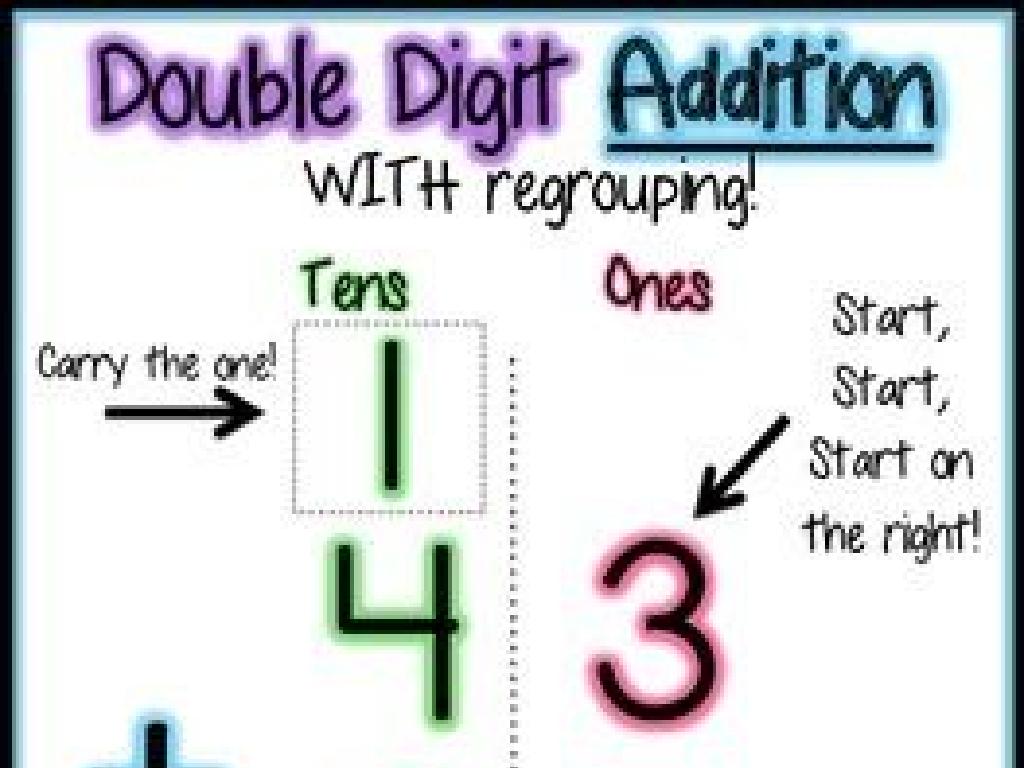Which Two Words End With The Same Sound?
Subject: Language arts
Grade: First grade
Topic: Beginning And Ending Sounds
Please LOG IN to download the presentation. Access is available to registered users only.
View More Content
Matching Ending Sounds
– Learn about word sounds
– Play with sounds in words
– Match words with same endings
– Find pairs like ‘cat’ and ‘hat’
– Recognize rhyming words
– Words that sound alike at the end, like ‘bee’ and ‘tree’
|
This slide introduces the concept of phonemic awareness, focusing on beginning and ending sounds of words. The objective is to help students recognize that some words have the same ending sounds, which is a foundational skill for reading and spelling. Engage the students with interactive activities such as listening to words and identifying similar ending sounds. Use examples that are familiar to first graders and encourage them to come up with their own word pairs. This will also introduce them to the concept of rhyming. Make the learning experience fun by incorporating games and songs that emphasize rhyming and repetition of sounds.
Exploring Sounds in Words
– Understanding word sounds
– Sounds are what we hear in spoken words.
– Words are sound puzzles
– Each word is like a puzzle made of different sounds put together.
– Listen to beginning sounds
– The first sound you hear in a word is the beginning sound.
– Listen to ending sounds
– The last sound you hear in a word is the ending sound.
|
This slide introduces the concept of phonemic awareness to first graders by focusing on the sounds that make up words. Emphasize that sounds are the building blocks of words and that by listening carefully, we can identify each sound. Encourage students to practice listening for the first sound they hear in a word, which is the beginning sound, and the last sound they hear, which is the ending sound. Use examples like ‘cat’ and ‘hat’ to demonstrate words that end with the same sound. Activities can include listening games where students identify and match words with the same beginning or ending sounds.
Matching Ending Sounds
– Understanding ending sounds
– Words with the same ending
– ‘Bake’ and ‘cake’ both end with ‘ake’
– Listening game: find the match
– We’ll say words aloud to hear if they rhyme
– Practice with examples
– ‘Cat’ and ‘hat’, ‘bee’ and ‘tree’
|
This slide is aimed at helping first graders recognize and match words that have the same ending sounds, an essential skill in phonemic awareness. Start by explaining that the ending sound is the last sound they hear in a word. Give clear examples of words that rhyme by sharing ending sounds and emphasize the importance of listening carefully to hear the similarities. Engage the class in a listening game where you say words out loud, and they identify pairs that end with the same sound. Encourage them to practice with examples and create their own rhyming pairs. This activity will not only help with their phonics skills but also with their ability to recognize patterns in spelling and reading.
Matching Ending Sounds
– Ending sounds in words
– The last sound you hear in a word
– ‘Cat’ and ‘hat’ end with ‘t’
– Both have the ‘t’ sound at the end
– Find words with the ‘t’ sound
– Look for words that sound like ‘cat’ and ‘hat’
– Share your words with the class
|
This slide is aimed at helping first graders recognize and match ending sounds in words, which is a fundamental skill in phonics and early reading. Start by explaining what ending sounds are and give clear examples with words like ‘cat’ and ‘hat’. Encourage the students to listen for the last sound in the word and find other words that share the same ending sound. Provide guidance on how to listen for sounds and articulate them clearly. During the next class, have a discussion where students can share the words they found and practice saying them aloud, reinforcing their phonemic awareness.
Matching Ending Sounds Game
– Listen to the teacher’s word
– Find a word with the same ending sound
– If the teacher says ‘cat’, think of ‘hat’, ‘bat’, or ‘rat’
– Ending sounds must match
– It’s okay if the spelling is different
– ‘Bee’ and ‘tree’ sound the same at the end, even though they are spelled with different letters
|
This slide introduces a fun and interactive game to help first graders recognize and match ending sounds in words, which is a key skill in phonemic awareness. The teacher will say a word out loud, and the students will find another word that ends with the same sound. It’s important to emphasize that they should focus on the sound, not the spelling. For example, ‘dog’ and ‘log’ end with the same sound but are spelled differently. Encourage students to listen carefully and think of as many words as they can that share the same ending sound. This activity can be done individually, in pairs, or in small groups to foster collaboration. The teacher should prepare a list of words to use for the game and be ready to assist students who may struggle with finding matching sounds.
Practice Time: Matching Sounds
– Observe the pictures shown
– Listen to the words I say
– Which pictures end the same?
– Think about the last sound in each word
– Raise your hand to answer!
– Get ready to share your guess
|
This slide is for an interactive class activity designed to help first graders recognize words that have the same ending sounds. Display pictures that represent various words to the class and pronounce each word clearly. Encourage the students to look and listen carefully to identify which words share the same ending sound. When a student knows the answer, they should raise their hand before speaking. This activity promotes active listening and phonemic awareness. As a teacher, be prepared with a list of words that rhyme and corresponding pictures to ensure a smooth flow of the activity. Offer positive reinforcement as students participate and provide guidance if they struggle to identify matching sounds.
Let’s Review: Beginning and Ending Sounds
– Beginning sounds: first sounds in words
– Ending sounds: last sounds in words
– Words with different beginnings, same endings
– Examples: ‘cat’ and ‘hat’, ‘dog’ and ‘log’
– ‘cat’ and ‘hat’ both end with ‘at’, ‘dog’ and ‘log’ end with ‘og’
|
This slide is aimed at reinforcing the concepts of beginning and ending sounds in words for first graders. Beginning sounds are the initial sounds we hear, and ending sounds are the final sounds. It’s crucial to highlight that while words may start with different sounds, they can still share the same ending sounds, which is an essential aspect of rhyming words and phonemic awareness. Provide examples like ‘cat’ and ‘hat’ to illustrate words that end with the same sound. Encourage students to think of other words that rhyme and share the same ending sounds. This understanding will help them with reading and spelling as they progress in language arts.
Sound Match Game
– Play ‘Sound Match’ with cards
– Each card has a picture
– Find cards with matching ending sounds
– For example, ‘cat’ and ‘hat’ end with the ‘at’ sound
– Work together to find matches
|
This class activity is designed to help first graders recognize and match ending sounds, which is a fundamental skill in phonics and early reading development. Provide each student with a set of picture cards. Instruct them to say the word that corresponds to the picture out loud and listen for the ending sound. Then, they should search for another card with a picture that ends with the same sound. Encourage collaboration among classmates to foster a supportive learning environment. Possible variations of the activity could include timing the game for added excitement, having students create their own cards with drawings, or pairing up students to work in teams. The goal is to make the learning experience fun and interactive.






